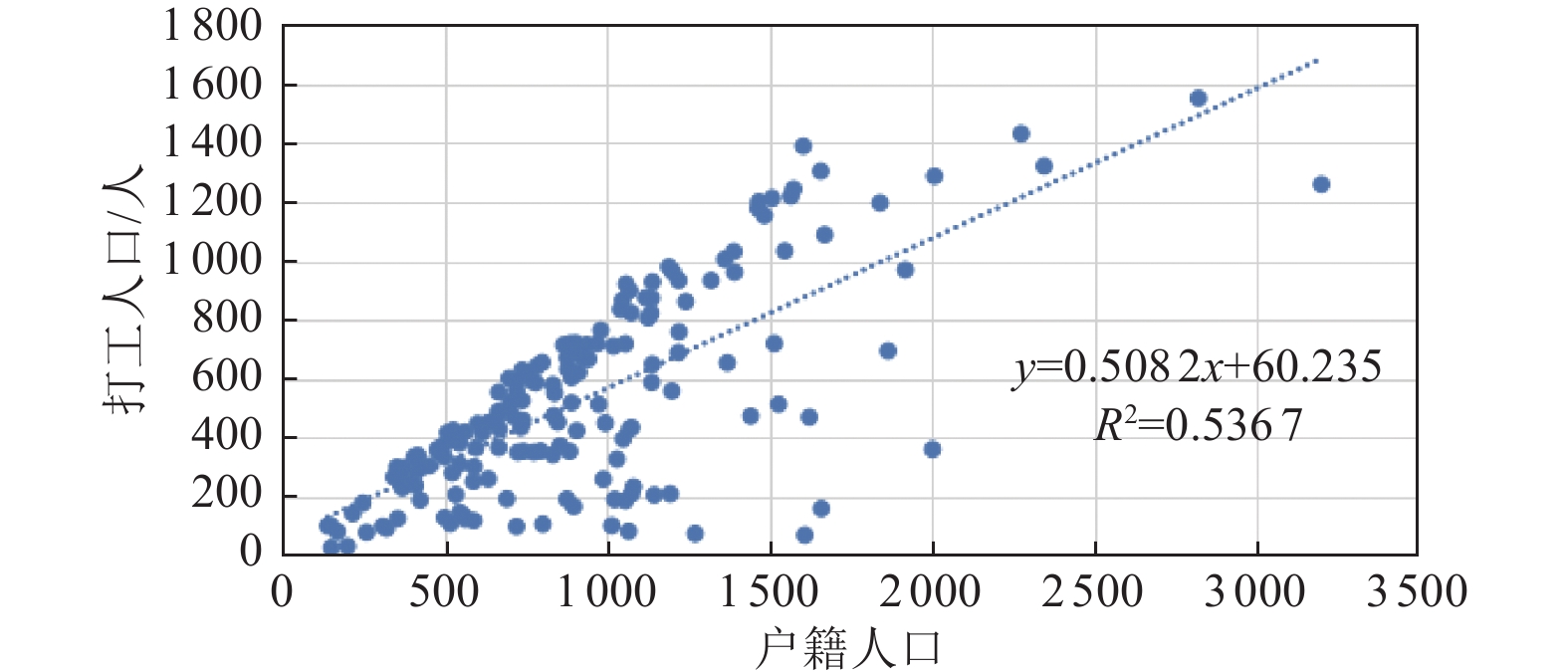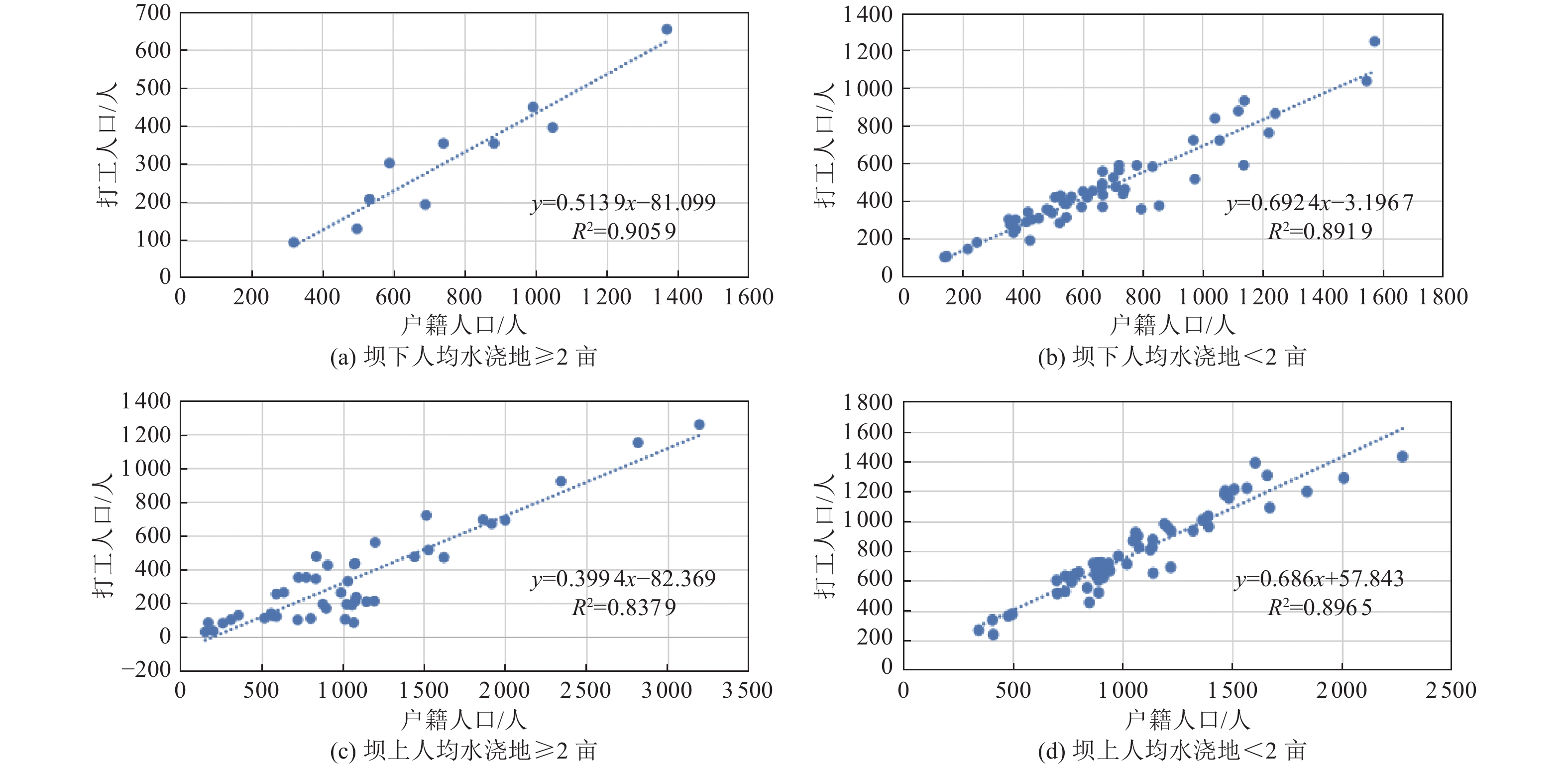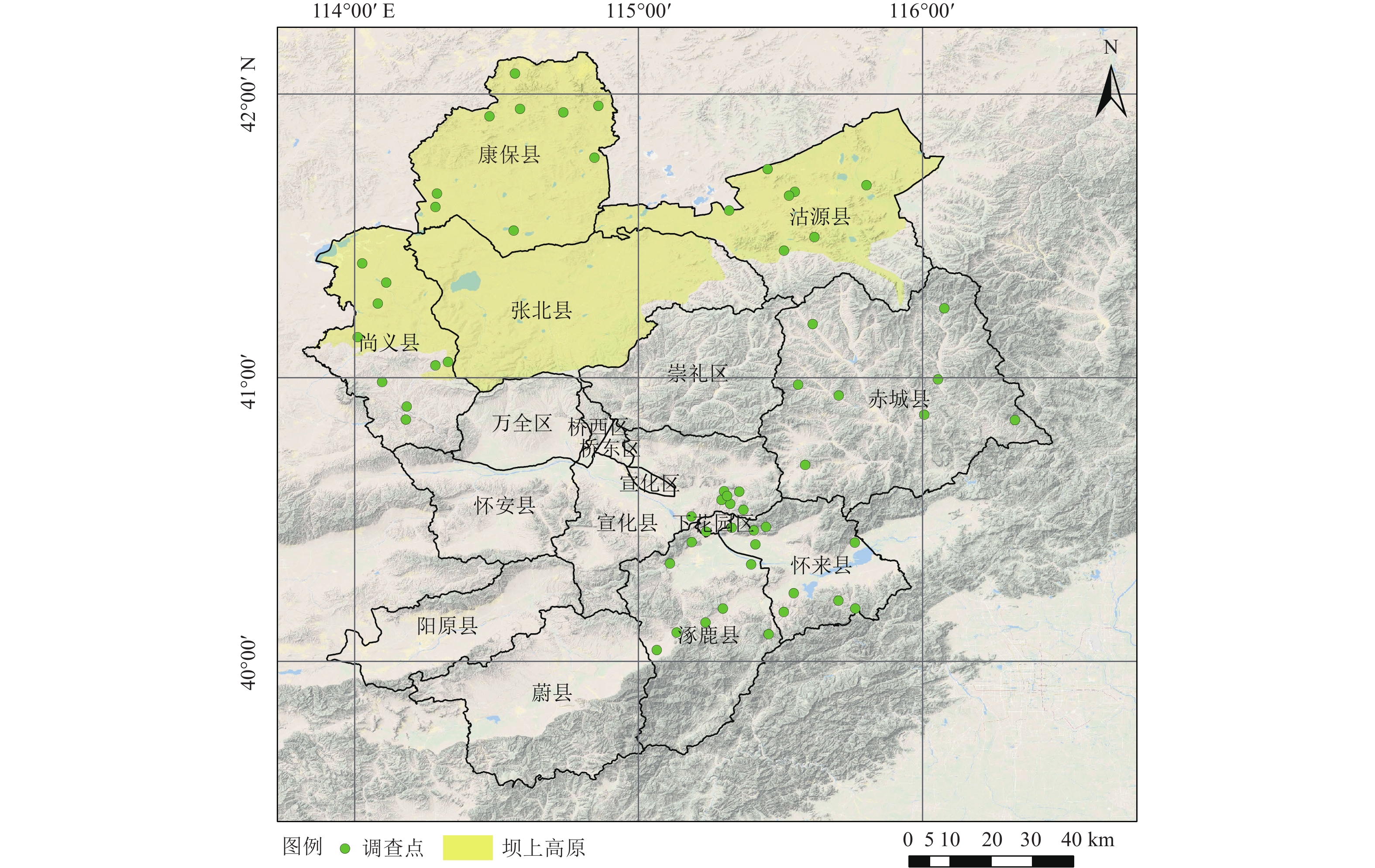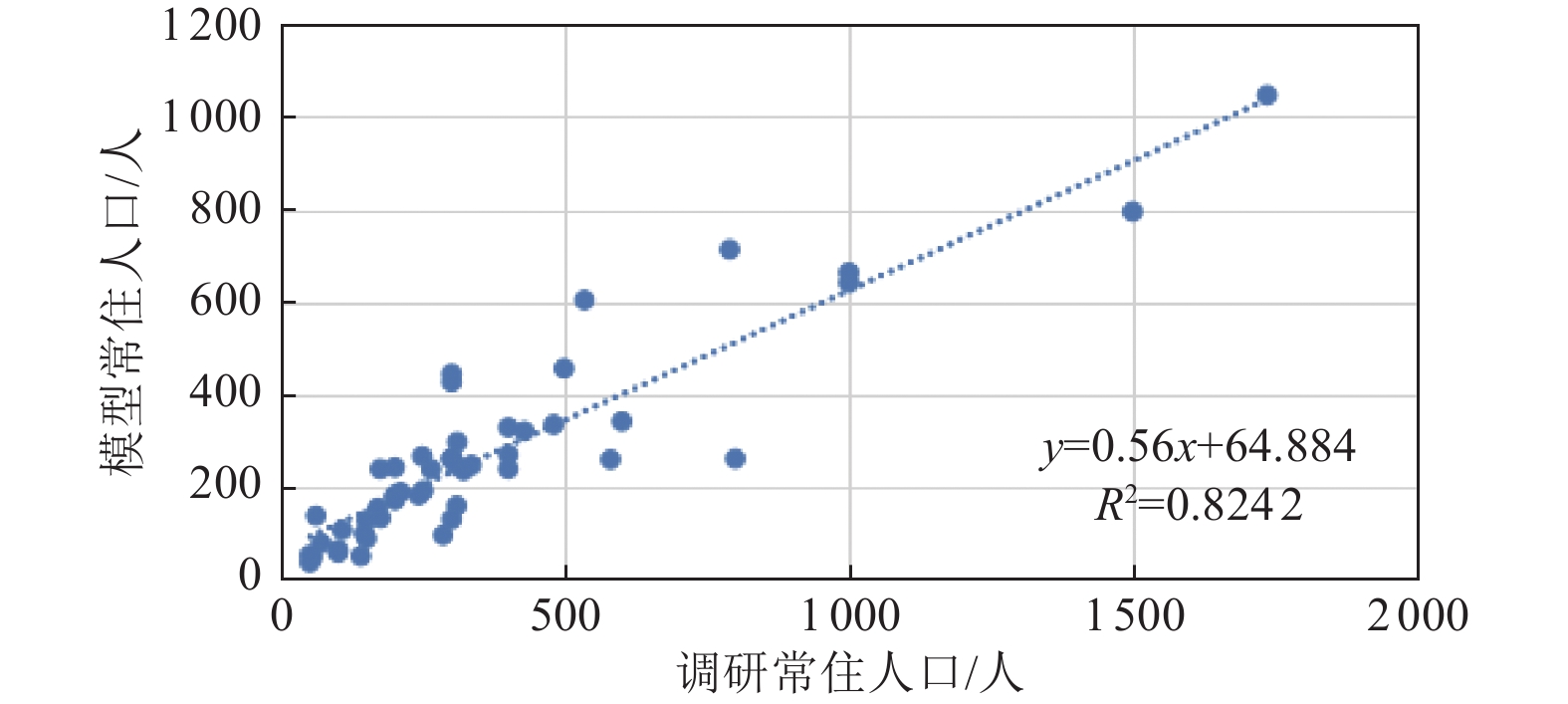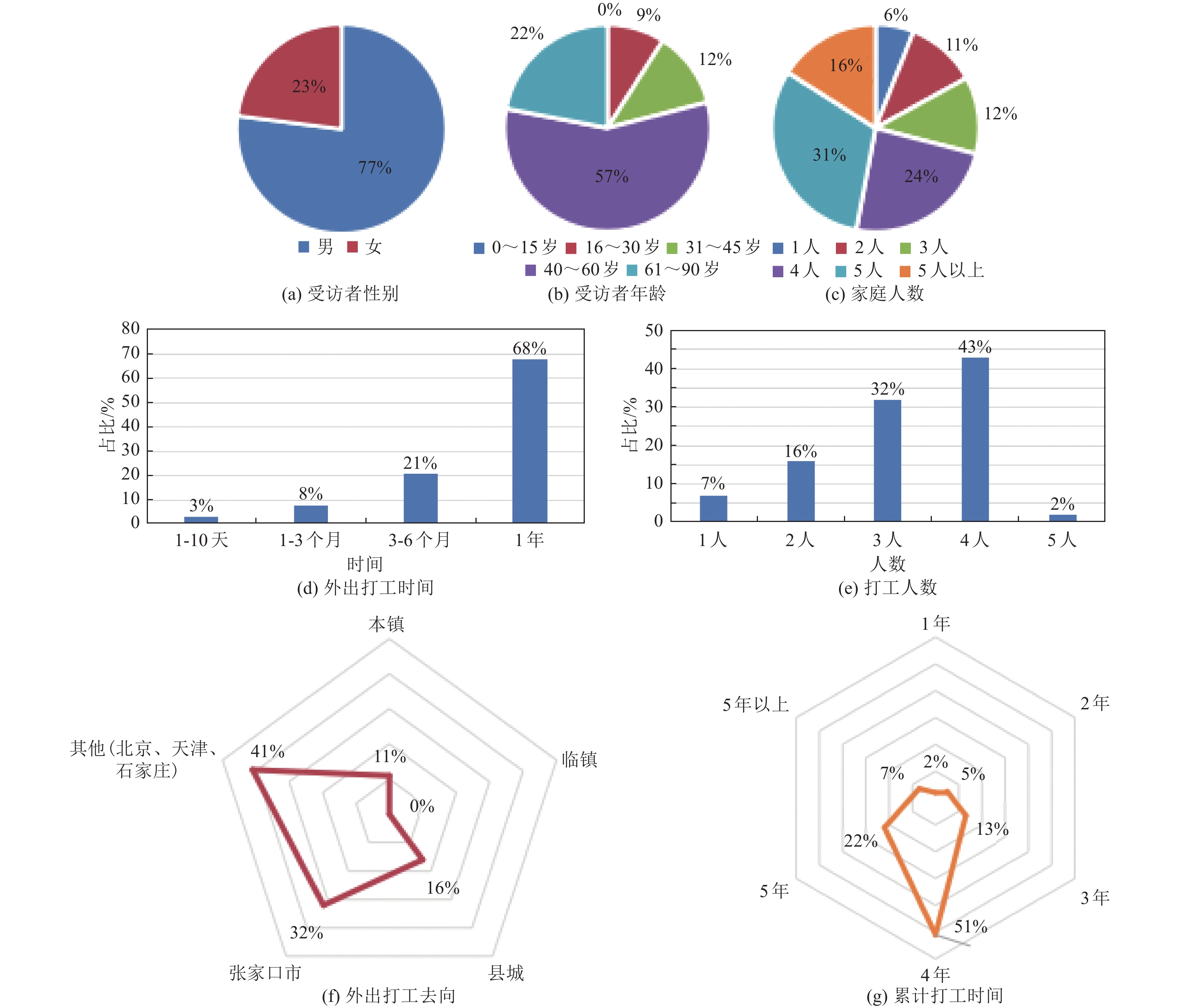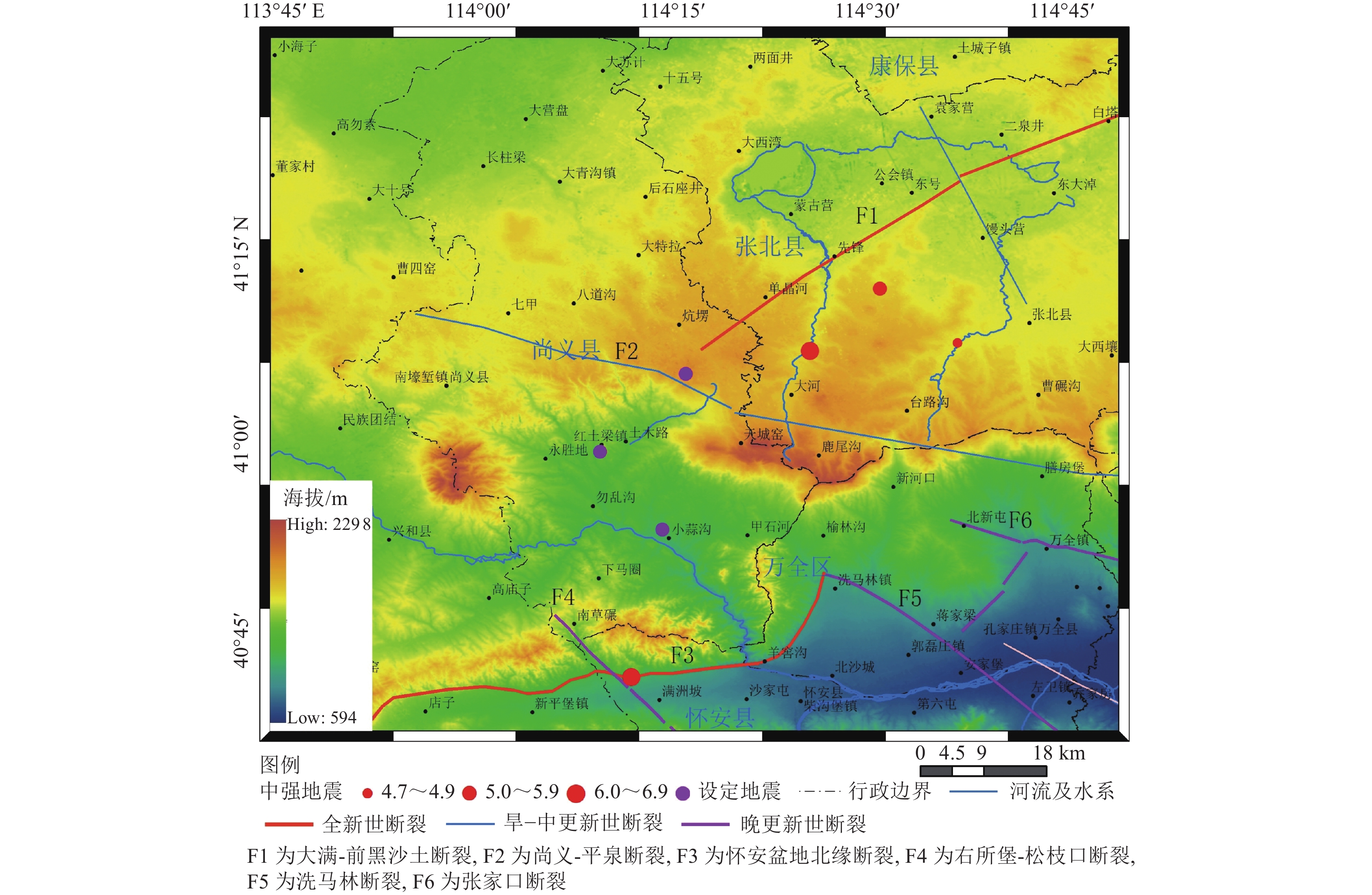Study on the Impact of Rural Population Flow in Zhangjiakou on the Casualty Assessment of Earthquake Disasters
-
摘要: 通过对农村人口流动的数据统计,利用Pearson相关分析法,分析不同因素下张家口地区村镇人口流动情况,发现流动人口率与人均水浇地面积和地理位置存在显著的相关性,并建立该区域村镇人口流动关系模型。通过实地调研张家口地区村镇人口数据,验证了村镇人口流动关系模型的适用性。基于公里格网人口、建筑物等基础数据,进行张家口地区设定地震灾害人员伤亡评估,结果表明,基于村镇人口流动关系模型修正后的人员伤亡评估结果与专家修正后的结果更接近。村镇人口流动关系模型可给出合理修正后的地震灾害人员伤亡评估结果,且更适用于6.0级以上有人员伤亡的地震评估。
-
关键词:
- 张家口地区 /
- 人口流动 /
- Pearson相关分析法 /
- 地震灾害 /
- 现场调查
Abstract: Based on the data statistics of rural population flow, pearson correlation analysis method is used to analyze the population flow of villages and towns in Zhangjiakou area under different factors. It is found that the floating population rate has significant correlation with the per capita irrigated land area and geographical location, and a relationship model of population flow in villages and towns in this area is established. Through the field survey of the population data of Zhangjiakou area, the applicability of the population flow relationship model of villages and towns is verified. Based on the basic data such as population and buildings in the kilometer grid, the casualty assessment of the earthquake disaster in Zhangjiakou area is conducted, and the result of the casualty assessment based on the population flow relationship model of villages and towns is closer to the result corrected by experts. The results show that the relationship model of population flow in villages and towns can give the reasonable revised evaluation results of casualties in earthquake disasters, and it is more suitable for the evaluation of earthquakes with casualties above M ≥ 6.0. -
表 1 张家口地区影响因素标准化值
Table 1. Standardized value of influencing factor index in Zhangjiakou area
影响因素 乡镇 大青沟镇 小蒜沟镇 红土梁镇 满井镇 八道沟镇 三工地镇 石井乡 大苏计乡 套里庄乡 七甲乡 甲石河乡 下马圈乡 大于65岁人口数 2.04 0.72 0.68 0.33 0.71 −0.60 0.36 −0.20 −0.55 −1.22 −0.74 −1.54 小于14岁人口数 2.75 0.16 0.10 −0.18 0.50 −0.33 −0.33 0.36 −0.82 −0.53 −0.39 −1.29 人均水浇地面积 −0.09 −0.54 −0.60 −0.64 0.00 1.09 −0.65 1.09 −0.43 2.38 −0.76 −0.84 坝上坝下 2.52 −0.03 −0.14 1.21 0.54 −0.34 −0.41 −0.20 −0.64 −0.81 −0.68 −1.02 GDP 2.73 0.03 −0.09 0.61 0.64 −0.30 −0.38 −0.17 −0.62 −0.80 −0.66 −1.02 农业生产总值 2.64 0.00 −0.11 0.91 0.59 −0.32 −0.40 −0.18 −0.63 −0.81 −0.67 −1.02 第三产业总值 2.43 −0.05 −0.16 1.39 0.51 −0.35 −0.42 −0.22 −0.64 −0.80 −0.68 −1.01 财政收入 2.42 −0.05 −0.16 1.41 0.50 −0.35 −0.42 −0.22 −0.64 −0.80 −0.68 −1.01 财政支出 2.75 0.04 −0.08 0.53 0.65 −0.30 −0.37 −0.15 −0.61 −0.79 −0.65 −1.02 固定资产投资总额 2.04 0.72 0.68 0.33 0.71 −0.60 0.36 −0.20 −0.55 −1.22 −0.74 −1.54 外贸进出口总额 2.75 0.16 0.10 −0.18 0.50 −0.33 −0.33 0.36 −0.82 −0.53 −0.39 −1.29 表 2 人均水浇地面积与坝上坝下关系
Table 2. Per capita irrigated land area of towns for above and under dam
乡镇 人均水浇地面积/亩 地理位置 大青沟镇 1.16 坝上 小蒜沟镇 0.48 坝上 红土梁镇 0.38 坝下 满井镇 0.31 坝下 八道沟镇 1.31 坝上 三工地镇 3.07 坝上 石井乡 0.30 坝上 大苏计乡 3.31 坝上 套里庄乡 0.64 坝下 七甲乡 5.35 坝上 甲石河乡 0.13 坝下 下马圈乡 0.00 坝下 表 3 调研数据
Table 3. Survey data list
调查点 户籍人口/人 外出打工人口/人 调查点 户籍人口/人 外出打工人口/人 涿鹿县大堡镇下虎盆村 637 387 赤城县东卯镇小西沟村 860 560 涿鹿县大堡镇贾儿岭村 184 134 赤城县镇宁堡镇葵花村 625 415 涿鹿县卧佛寺乡王家窑村 220 120 赤城县镇宁堡镇二堡子村 977 667 涿鹿县黑山寺乡口前村 1 485 885 赤城县三道川乡黑龙山村 815 510 涿鹿县矾山镇燕王沟村 603 403 赤城县东万口乡西万口村 1 100 720 涿鹿县五堡镇代家沟村 800 600 康保县满德堂乡六段村 1 034 766 涿鹿县温泉屯乡吉家营村 2 317 1 280 康保县屯垦镇卧虎石村 946 722 涿鹿县保岱镇下葫芦村 1 530 1 030 康保县屯垦镇西井子村 679 509 涿鹿县涿鹿镇沈庄村 860 560 康保县二号卜乡二十号地村 609 434 涿鹿县矾山镇柳树庄村 364 179 康保县二号卜乡徐五林村 504 398 怀来县北辛堡镇李官屯村 1 800 1 200 康保县土城子乡小庙洼村 936 616 怀来县孙庄子乡孙庄子村 700 420 康保县照阳河镇乡照阳河村 766 524 怀来县官厅镇何家寨村 435 235 康保县满德堂乡张油坊村 624 533 怀来县小南辛堡镇水头村 200 100 康保县闫油坊乡大土城村 974 667 怀来县小南辛堡镇化庄村 860 560 沽源县高山堡乡盐淖村 1 051 261 怀来县存瑞镇永安村 1 400 1 100 沽源县高山堡乡西壕堑村 869 335 怀来县新保安镇东黄庄村 889 589 高山堡乡北滩村 604 204 怀来县鸡鸣驿乡西黄庄村 869 569 高山堡乡大西洼村 623 125 怀来县大黄庄镇谈家房村 429 279 沽源县小河子乡脑包山村 693 484 怀来县新保安镇盘道底村 130 80 沽源县西辛营乡东辛营村 750 550 下花园区定方水乡定方水村 1 080 680 沽源县闪电河乡蝈蝈山村 947 647 下花园区定方水乡王罗庄村 271 151 尚义县大营盘乡十二号村 2 008 1 288 下花园区定方水乡慢梁村 100 45 尚义县大清沟镇大清沟镇 1 528 514 下花园区定方水乡梁家庄村 570 370 尚义县大清沟镇白彦堡村 1 840 1 197 下花园区定方水乡红崖沟村 786 522 尚义县七甲子乡北营子村 1 081 234 下花园区花园乡夏家沟村 300 150 尚义县小蒜沟镇下纳岭村 480 354 下花园区辛庄子乡响水铺村 826 498 尚义县下马圈乡白家窑村 1 221 759 下花园区段家堡乡新建村 592 392 尚义县套里庄乡西城窑村 897 620 赤城县马营乡二对沟村 267 197 尚义县套里庄乡元卜洞村 750 624 赤城县田家窑镇郭庄子村 862 561 尚义县红土梁镇永胜地村 710 473 赤城县龙门所镇小堡子村 360 253 表 4 地震参数
Table 4. Table of setting seismic parameters
经度/° 纬度/° 震中附近地名 发震断裂名称 114.16 40.99 尚义县红土梁镇 尚义-平泉断裂 114.24 40.89 尚义县小蒜沟村 尚义-平泉断裂 114.27 41.09 尚义县张北县交界 尚义-平泉断裂 表 5 设定地震评估结果
Table 5. Set earthquake assessment results
震级/级 震中
经度/°震中
纬度/°宏观
位置模型 灾区
总面积
/km2预估
死亡人数
/人死亡人数(变
动关系模型
修正)/人死亡人数
(专家修正)
/人预估
受伤人数
/人受伤人数
(变动关系模型
修正)/人受伤人数
(专家修正)
/人5.5 114.16 40.99 尚义县红土梁镇 陶谋立模型 504 0 0 0~5 3 1 0~10 尹之潜模型 504 0 0 0~5 2 1 0~10 马玉宏模型 504 0 0 0~5 2 1 0~10 114.24 40.89 尚义县小蒜沟村 陶谋立模型 505 0 0 0~10 7 5 10~20 尹之潜模型 505 0 0 0~10 4 3 10~20 马玉宏模型 505 0 0 0~10 12 8 10~20 114.27 41.09 尚义县满井镇 陶谋立模型 505 0 0 0~10 30 18 30~60 尹之潜模型 505 0 0 0~10 25 15 30~60 马玉宏模型 505 3 1 0~10 19 11 30~60 6.0 114.16 40.99 尚义县红土梁镇 陶谋立模型 1 769 9 5 0~10 45 24 10~100 尹之潜模型 1 769 8 4 0~10 41 21 10~100 马玉宏模型 1 769 8 4 0~10 80 43 10~100 114.24 40.89 尚义县小蒜沟村 陶谋立模型 1 772 9 6 0~10 70 56 10~100 尹之潜模型 1 772 8 5 0~10 66 53 10~100 马玉宏模型 1 772 9 6 0~10 89 71 10~100 114.27 41.09 尚义县满井镇 陶谋立模型 2 155 22 10 0~20 420 273 250~300 尹之潜模型 2155 17 8 0~20 414 269 250~300 马玉宏模型 2 155 72 33 0~20 580 377 250~300 6.5 114.16 40.99 尚义县红土梁镇 陶谋立模型 4940 62 26 10~100 300 159 100~1 000 尹之潜模型 4 940 38 16 10~100 211 112 100~1 000 马玉宏模型 4940 79 33 10~100 955 508 100~1 000 114.24 40.89 尚义县小蒜沟村 陶谋立模型 5 211 71 55 10~100 700 378 200~1 000 尹之潜模型 5 211 66 51 10~100 684 369 200~1 000 马玉宏模型 5 211 105 82 10~100 1 248 674 200~1 000 114.27 41.09 尚义县满井镇 陶谋立模型 5 769 111 57 10~100 2 178 1 446 1 300~1 500 尹之潜模型 5769 108 55 10~100 2 101 1 395 1 300~1 500 马玉宏模型 5 769 182 93 10~100 2 165 1 443 1 300~1 500 -
陈振拓, 李志强, 丁文秀等, 2012. 面向防震减灾的人口数据空间化研究——以2007年宁洱地震灾区为例. 震灾防御技术, 7(3): 273—284 doi: 10.3969/j.issn.1673-5722.2012.03.006Chen Z. T. , Li Z. Q. , Ding W. X. , et al. , 2012. Study of spatial population distribution in earthquake disaster reduction——a case study of 2007 Ning'er Earthquake. Technology for Earthquake Disaster Prevention, 7(3): 273—284. (in Chinese) doi: 10.3969/j.issn.1673-5722.2012.03.006 高娜, 贾军鹏, 魏艳旭等, 2012. 地震灾害评估软件烈度衰减系数研究. 华北地震科学, 30(1): 6—11 doi: 10.3969/j.issn.1003-1375.2012.01.002Gao N. , Jia J. P. , Wei Y. X. , et al. , 2012. Study on the intensity attenuation coefficient of seismic disaster assessment software. North China Earthquake Sciences, 30(1): 6—11. (in Chinese) doi: 10.3969/j.issn.1003-1375.2012.01.002 郭秋娜, 温超, 周月玲等, 2020.2018年2月12日河北永清4.3级地震强震动记录分析. 震灾防御技术, 15(2): 329—338Guo Qiuna, Wen Chao, Zhou Yueling, et al., 2020. Analysis of strong motion records of Hebei Yongqing m4.3 earthquake on February 12, 2018 Earthquake disaster prevention technology, 15 (2): 329-338 (in Chinese) 黄金侠, 2020. 基于多源数据的长沙市人口多尺度空间化建模. 长沙: 湖南师范大学.Huang J. X., 2020. Multi-scale modeling of population spatialization in Changsha based on multi-source data. Changsha: Hunan Normal University. (in Chinese) 回德宇, 2020. 辽宁省流动人口收入状况及其影响因素研究. 长春: 吉林大学.Hui D. Y., 2020. Research on income status and its influencing factors of floating population in Liaoning province. Changchun: Jilin University. (in Chinese) 贾召亮, 郑川, 李袁欣等, 2020. 面向地震应急的人口空间化方法研究——以云南省大理白族自治州为例. 地震研究, 43(4): 751—758 doi: 10.3969/j.issn.1000-0666.2020.04.019Jia Z. L. , Zheng C. , Li Y. X. , et al. , 2020. Study on Spatialization of demographic data for earthquake emergency: a case study in Dali Bai autonomous prefecture of Yunnan Province. Journal of Seismological Research, 43(4): 751—758. (in Chinese) doi: 10.3969/j.issn.1000-0666.2020.04.019 李姜, 张合, 刘志辉, 2021 a. 张家口地区精细化地震灾害风险评估. 震灾防御技术, 16(1): 134—145 doi: 10.11899/zzfy20210114Li J. , Zhang H. , Liu Z. H. , 2021. Refined risk assessment of earthquake disaster in Zhangjiakou Area. Technology for Earthquake Disaster Prevention, 16(1): 134—145. (in Chinese) doi: 10.11899/zzfy20210114 李姜, 张合, 刘志辉等, 2021 b. 基于遥感影像的建筑抗震能力分析——以张家口万全区为例. 震灾防御技术, 16(2): 371—380 doi: 10.11899/zzfy20210216Li J. , Zhang H. , Liu Z. H. , et al. , 2021. Analysis of seismic capacity of buildings based on remote sensing image——taking Zhangjiakou Wanquan district as an example. Technology for Earthquake Disaster Prevention, 16(2): 371—380. (in Chinese) doi: 10.11899/zzfy20210216 梁亚婷, 温家洪, 杜士强等, 2015. 人口的时空分布模拟及其在灾害与风险管理中的应用. 灾害学, 30(4): 220—228 doi: 10.3969/j.issn.1000-811X.2015.04.038Liang Y. T. , Wen J. H. , Du S. Q. , et al. , 2015. Spatial-temporal distribution modeling of population and its applications in disaster and risk management. Journal of Catastrophology, 30(4): 220—228. (in Chinese) doi: 10.3969/j.issn.1000-811X.2015.04.038 廖顺宝, 李泽辉, 2004. 四川省人口分布与土地利用的关系及人口数据空间化试验. 长江流域资源与环境, 13(6): 557—561 doi: 10.3969/j.issn.1004-8227.2004.06.009Liao S. B. , Li Z. H. , 2004. Relationship between population distribution and land use and spatialization of population census data. Resources and environment in the Yangtze Basin, 13(6): 557—561. (in Chinese) doi: 10.3969/j.issn.1004-8227.2004.06.009 刘龙, 刘志辉, 刘晓丹等, 2019. 张北地区农村房屋抗震性能分析. 华北地震科学, 37(2): 82—88 doi: 10.3969/j.issn.1003-1375.2019.02.013Liu L. , Liu Z. H. , Liu X. D. , et al. , 2019. Analysis of the seismic performance of rural houses in the areas of Zhangbei. North China Earthquake Sciences, 37(2): 82—88. (in Chinese) doi: 10.3969/j.issn.1003-1375.2019.02.013 刘涛, 齐元静, 曹广忠, 2015. 中国流动人口空间格局演变机制及城镇化效应——基于2000和2010年人口普查分县数据的分析. 地理学报, 70(4): 567—581 doi: 10.11821/dlxb201504005Liu T. , Qi Y. J. , Cao G. Z. , 2015. China's floating population in the 21 st century: uneven landscape, influencing factors, and effects on urbanization. Acta Geographica Sinica, 70(4): 567—581. (in Chinese) doi: 10.11821/dlxb201504005 刘晓丹, 刘志辉, 刘龙等, 2019. 张家口地区农村房屋建筑特征和抗震能力评价. 地震研究, 42(2): 158—165 doi: 10.3969/j.issn.1000-0666.2019.02.002Liu X. D. , Liu Z. H. , Liu L. , et al. , 2019. Features and seismic capacity evaluation of rural houses in Zhangjiakou Area. Journal of Seismological Research, 42(2): 158—165. (in Chinese) doi: 10.3969/j.issn.1000-0666.2019.02.002 刘颖, 邓伟, 宋雪茜等, 2017. 基于综合城镇化视角的省际人口迁移格局空间分析. 地理科学, 37(8): 1151—1158 doi: 10.13249/j.cnki.sgs.2017.08.004Liu Y. , Deng W. , Song X. Q. , et al. , 2017. Spatial pattern of interprovincial population migration from the comprehensive urbanization perspective. Scientia Geographica Sinica, 37(8): 1151—1158. (in Chinese) doi: 10.13249/j.cnki.sgs.2017.08.004 马玉宏, 谢礼立, 2000. 地震灾害人员伤亡估算方法研究. 地震工程与工程振动, 20(4): 140—147 doi: 10.3969/j.issn.1000-1301.2000.04.021Ma Y. H. , Xie L. L. , 2000. Methodologies for assessment of earthquake casualty. Earthquake Engineering and Engineering Vibration, 20(4): 140—147. (in Chinese) doi: 10.3969/j.issn.1000-1301.2000.04.021 茅远哲, 曹筠, 高晨等, 2019. 京西北地区地应变观测与小震震源机制解一致性研究. 中国地震, 35(4): 709—717 doi: 10.3969/j.issn.1001-4683.2019.04.011Mao Y. Z. , Cao J. , Gao C. , et al. , 2019. Consistency of ground strain observation and source mechanism solution of small earthquakes in Northwest Beijing. Earthquake Research in China, 35(4): 709—717. (in Chinese) doi: 10.3969/j.issn.1001-4683.2019.04.011 王新贤, 2017. 中国流动人口空间格局演变及影响因素分析. 上海: 华东师范大学.Wang X. X., 2017. The Analysis of evolution of spatial pattern of China’s floating population and its influencing factors. Shanghai: East China Normal University. (in Chinese) 尹之潜, 1991. 地震灾害损失预测研究. 地震工程与工程振动, 11(4): 87—96 doi: 10.13197/j.eeev.1991.04.010Yin Z. Q. , 1991. A study for predicting earthquake disaster loss. Earthquake Engineering and Engineering Vibration, 11(4): 87—96. (in Chinese) doi: 10.13197/j.eeev.1991.04.010 张家口市人民政府办公室, 张家口市统计局, 2018. 张家口经济年鉴. 北京: 中国统计出版社.Zhangjiakou Municipal People's Government Office, Zhangjiakou Bureau of Statistics, 2018. Zhangjiakou economic yearbook. Beijing: China Statistics Press. (in Chinese) 张茂发, 2014. 河北省流动人口地域类型研究. 石家庄: 河北师范大学.Zhang M. F., 2014. Study on the regional types of Hebei province’s floating population. Shijiazhuang: Hebei Normal University. (in Chinese) 周月玲, 尤惠川, 杨歧焱, 2018. 洗马林断裂构造几何与变形转换作用. 地震地质, 40(1): 57—70 doi: 10.3969/j.issn.0253-4967.2018.01.005Zhou Y. L. , You H. C. , Yang Q. Y. , 2018. Geometry and deformation transformation of the Ximalin fault. Seismology and Geology, 40(1): 57—70. (in Chinese) doi: 10.3969/j.issn.0253-4967.2018.01.005 周燕萍, 2011. 我国省际人口流动的社会经济效应研究. 昆明: 云南大学.Zhou Y. P., 2011. A study of inter-provincial migration’s social and economy effects in China. Kunming: Yunnan University. (in Chinese) Fan C. C. , 2011. Settlement intention and split households: findings from a survey of migrants in Beijing's urban villages. China Review, 11(2): 11—41. Ravenstein E. G. , 1885. The laws of migration. Journal of the Statistical Society of London, 48(2): 167—235. doi: 10.2307/2979181 Todaro M. P. , 1969. A model of labor migration and urban unemployment in less developed countries. The American Economic Review, 59(1): 138—148. -



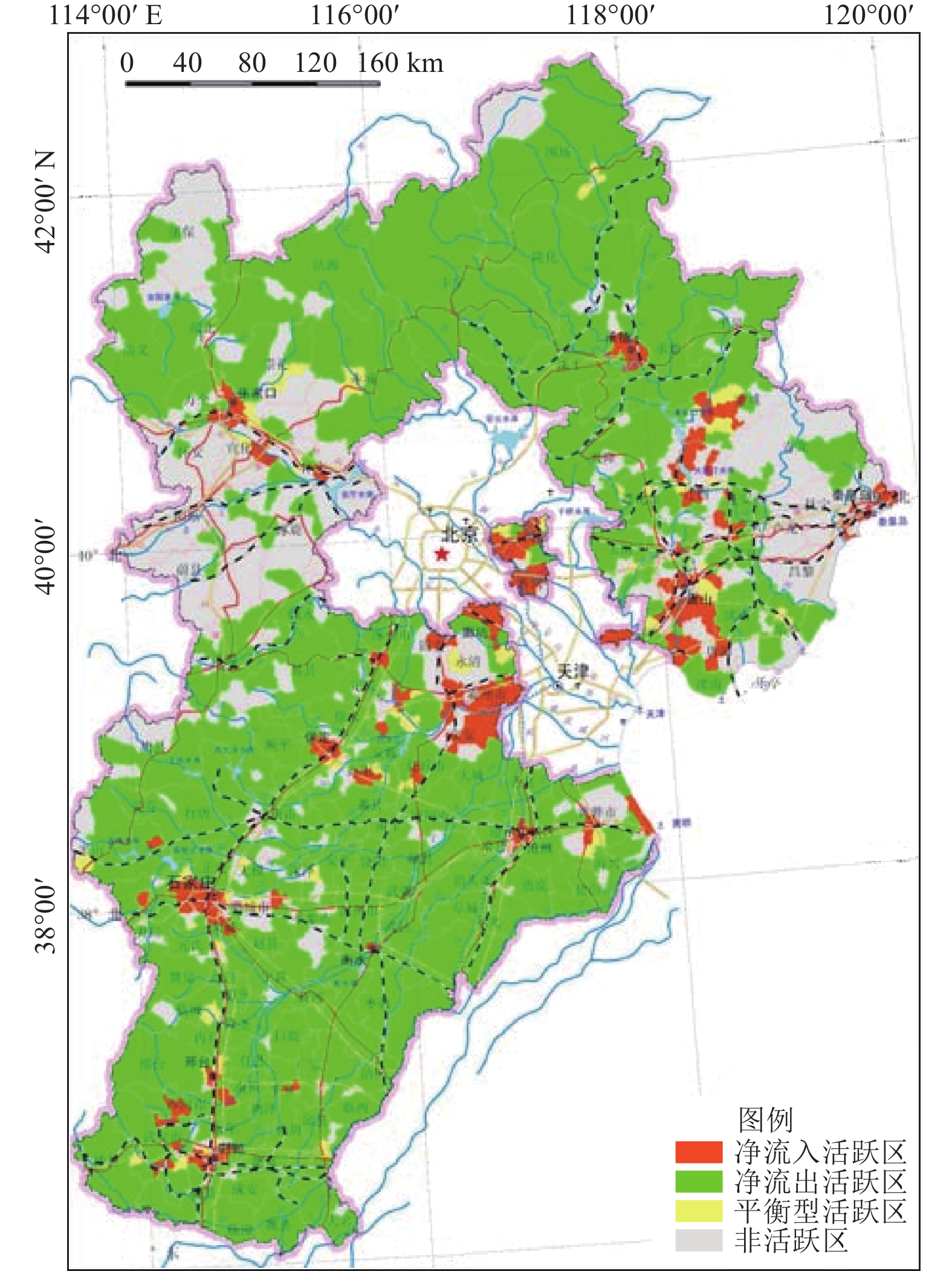
 下载:
下载:

